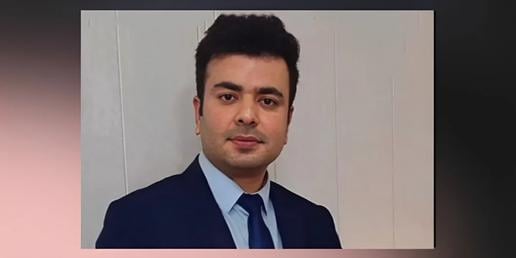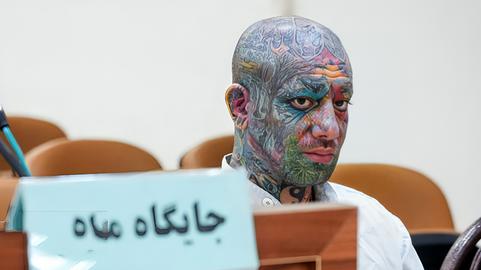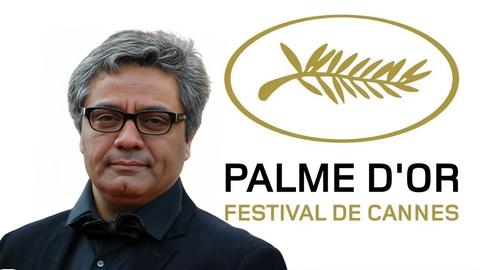
A recent report on Iranians attending universities in the United States draws attention to both the challenges they face and the significant role they can play in bringing the two countries closer.
Steven Ditto, an independent Middle East researcher and the author of Red Tape, Iron Nerve: the Iranian Question for U.S. Education, conducted extensive research and interviewed Iranian students over a number of months to offer insight into and analysis about their experience.
According to the report, published by the Washington Institute, Iranian citizens represent the 15th largest foreign national student population in the U.S, with 8,744 students attending various universities and further education or community colleges. China comes first (235,000 students), followed by India (96,000 students) and South Korea (70,000 students). Compared to these countries, Iranian students do not constitute a significant student population. But despite the fact that they represent less than one per cent of the U.S.‘s total international student population, they stand out for a number of reasons:
-- 80 per cent of Iranian students are graduate students
-- 75 per cent of Iranian students study in the fields of science, technology, engineering and mathematics (STEM). When compared with other countries percentage-wise, Iran’s student population studies STEM subjects more than any other nationality.
-- 85 per cent receive full scholarships from academic institutions based within the United States.
-- One-third of Iranian students in the United States are women.
-- Medical students form the largest group among Iranian female students in the United States.
Iranians leave their homeland to study abroad in other countries too. Today Iranians are the largest groups among international students in India and Malaysia.
Ongoing Challenges
Most Iranians are aware of the challenges they face if they choose to study abroad, particularly the United States. For the past four decades, there has been no official diplomatic relationship between Iran and the U.S., despite existing academic links and a large Iranian American population residing there.
There is no U.S. consulate within Iran and about 75 per cent of Iranian students receive only single-entry visas to study in American universities. Many choose to stay in the States for several years, forgoing seeing their family and traveling back home because there is no guarantee of a timely return to their studies. Those who go back to visit risk months of frustration waiting to receive a re-entry visa. Despite the official change in U.S. policy regarding student visa for Iranians, American consulates based in West Asia and the wider region do not hold to the same policy.
Internationally implemented sanctions against Iranian banks and Iran’s economic volatility mean many Iranian students must pay a large sum of money before arriving on campus. According to Ditto’s report, an Iranian student must spend on average anywhere from $3,000 to $5,000 before traveling to the United States. This is a hefty sum for a middle class family, the equivalent of seven months’ income. Until 2012, the Iranian government provided students with hard currency at a lower exchange rate than normal, but because its reserves were declining sharply due to sanctions, it was forced to abandon this policy.
There is also lack of academic infrastructure to build academic relations or an official academic exchange program between the two countries. Because there is no consulate service, in order to take the Graduate Management Admission Test (GMAT) or Graduate Record Examination (GRE), Iranian students must pay $12,000 to authorities so they can travel to a neighboring country where tests are held.
Small Steps
A few years ago, Secretary of State Hillary Clinton announced that Iranian students, except for those studying particularly security-sensitive areas, would receive multiple entry visas to enter the United States. For many Iranian students, it was a moment of jubilation. However, it did not last long. Regulations around entering the country remain confusing and, as Ditto points out, Iranian students continue to face significant challenges, which he urges politicians and diplomats to address, despite their differences.
Steven Ditto points out that academic exchanges between Iran and USA has a century-long history and that Iranians from both pre-and post-revolutionary Iran studied in American universities. Recently, Iran’s minister of foreign affairs, Dr. Mohammad Javad Zarif, spoke to his own alma mater, the University of Denver, via an online conversation with the dean of the university’s school of international studies. From 1975 to 1983, Iranian students formed the largest group of international students at American universities. Their number and relative size peaked in 1980, when 56,000 Iranians studied there.
Following the Iranian Revolution, Iranian students remained the largest international student group in the States for almost two years. Iranians often chose American universities as their first destination, despite the anti-American flavor of the revolution.
But after the hostage crisis and the Iran-Iraq war, the number of Iranian students in the U.S. dwindled. By 1999, the once significantly large Iranian students’ community in totaled only 1,660. The years that followed saw an increase, as the new generation used their own means and connections to follow their academic pursuits. In the 2012-13 academic year, the number of Iranian students increased by 25 per cent and continues to rise.
The Vanguard of Iran’s Human Rights Movement
Considering the history of Iranian students in the U.S. and the complex diplomacy between the two countries, it is surprising that this is the first analysis of its kind. Ditto emphasizes the ways in which Iranian students might be a potential asset, helping to normalize and expand diplomatic relations. He points out that Iranian students are the vanguard of the human rights movement in Iran and will be crucial to any process of introducing human rights-based values in Iranian society.
As a result, the report offers a number of policy recommendations:
-- It stresses the need for diplomatic relations to be revitalized and the role Iranian students might play in facilitating this, keeping in mind the great respect Iranian society has for further education and the fact that Iranian students are well connected and cultivate transnational networks easily and effectively.
-- It calls for the United States need to publicly reaffirm its commitment to the aspirations and rights of the Iranian people, students included.
-- It urges the United States to reassess and reform its policy with regard to student entry to the country. Currently, Iranian students question the effectiveness of the public diplomacy mandate the United States government has adopted with regard to students, and experience many contradictions in its implementation. Iranians take on financial and personal hardship to pursue their studies in the U.S. and it is time to recognize their rights, which should be in line with rights enjoyed by other groups of international students.
Red Tape, Iron Nerve indicates a significant increase in public interest in the conditions of Iranian students in the United States today. Steven Ditto has utilized social networks and his connections from within Iran to draw an accurate picture of the Iranian experience. And perhaps that is its most attractive feature: it is the story of an odyssey told by an observer who cares about those who seek knowledge beyond the borders of their homeland.






















comments